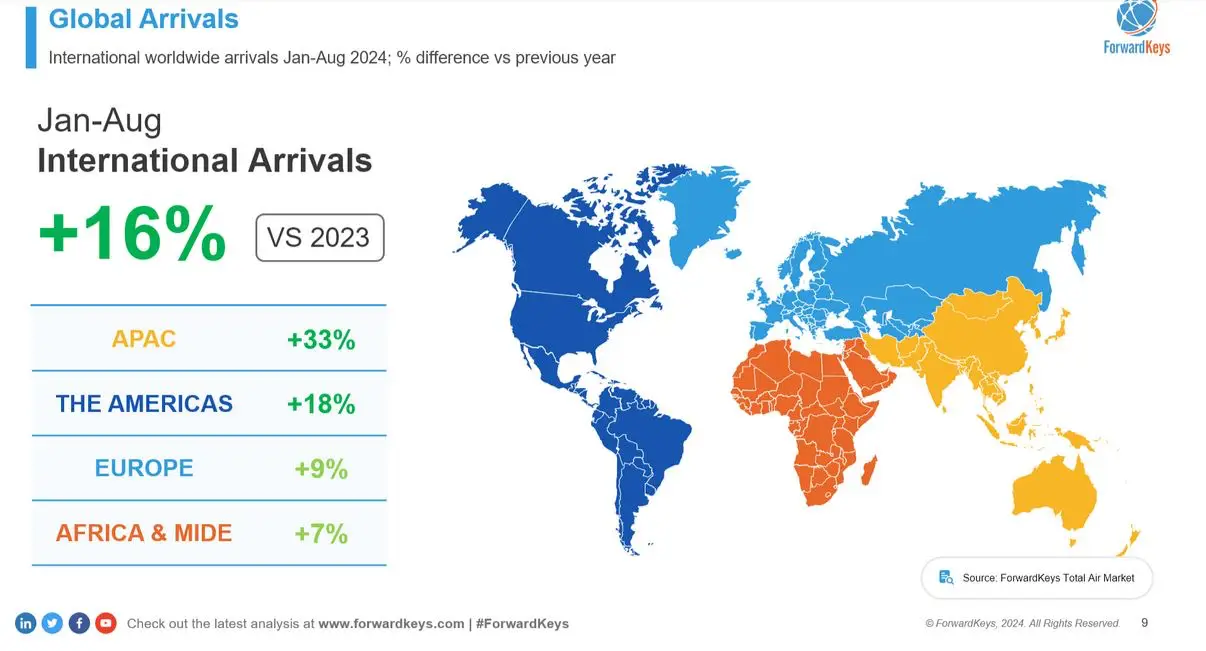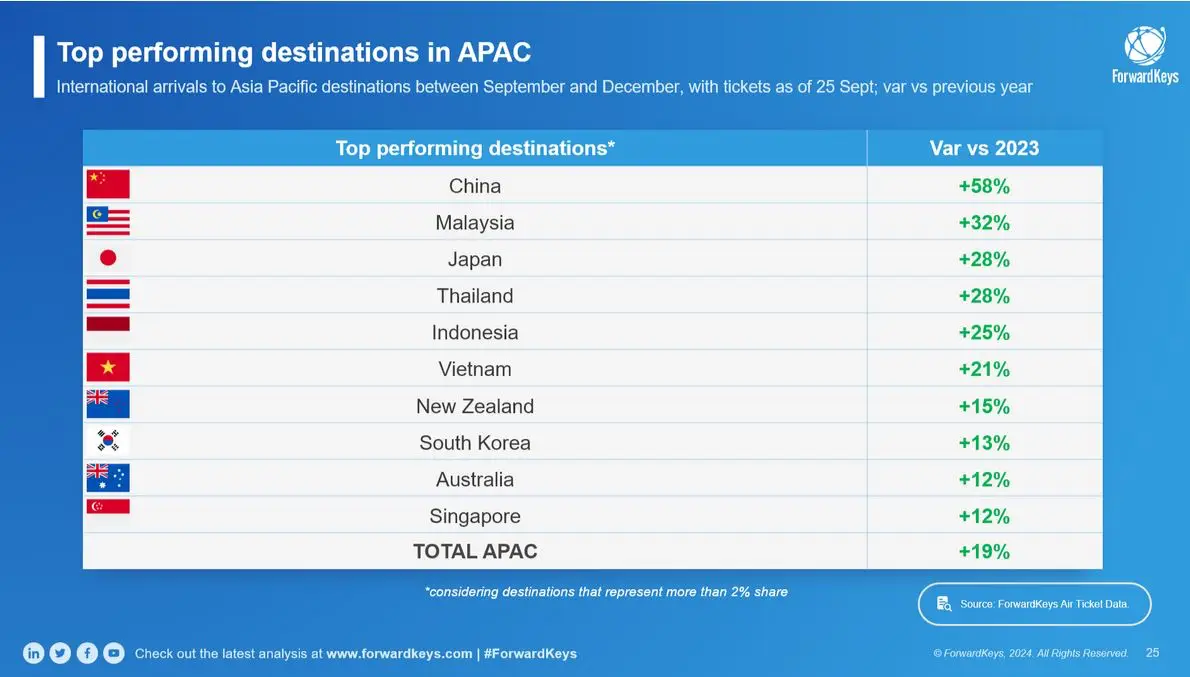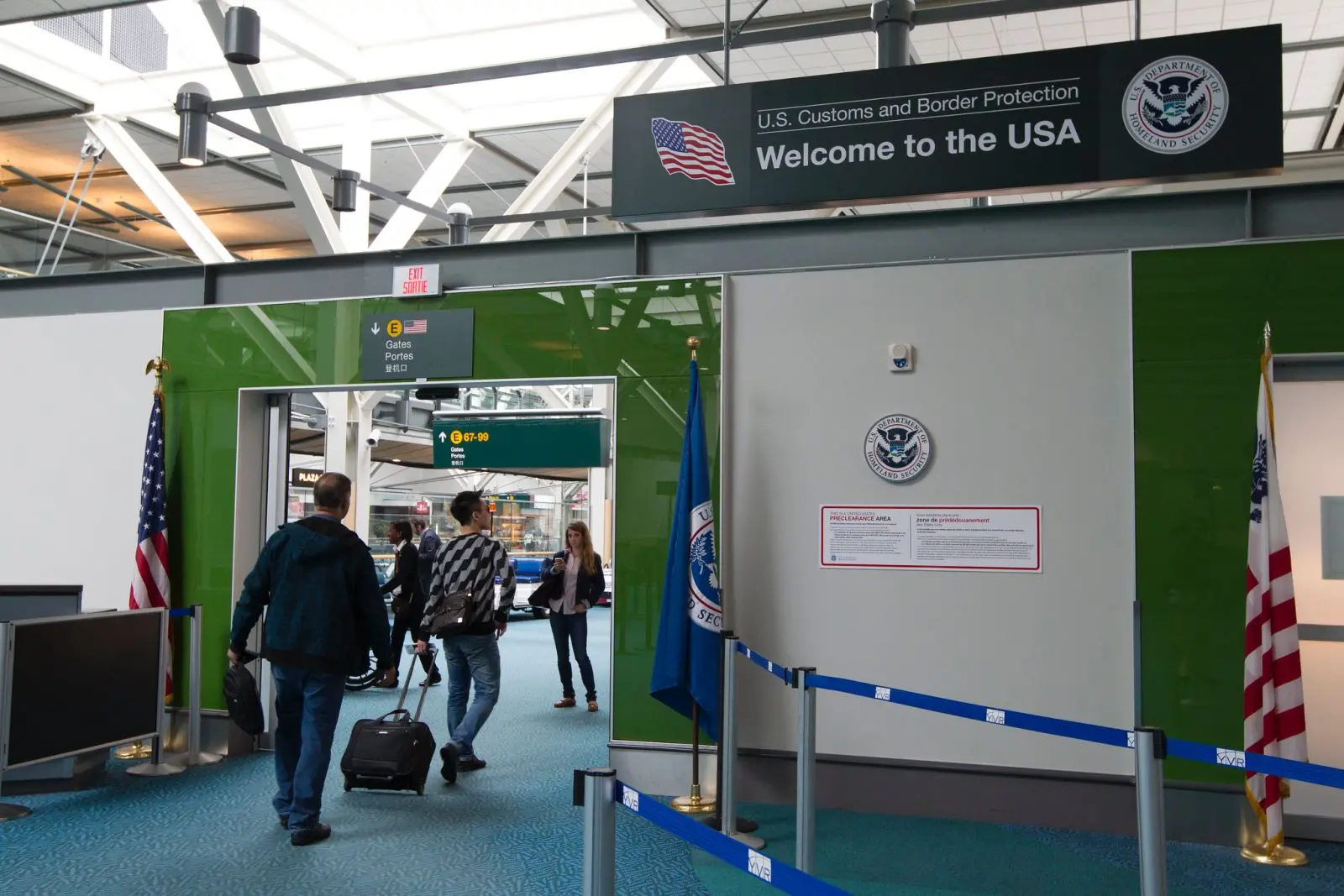Travel intelligence firm ForwardKeys has reported a strong resurgence in the global tourism industry, with international arrivals up 16% compared to 2023.
This is driven by a revival in the Asia-Pacific (APAC) region after its delayed post-pandemic reopening.
While the region still lags pre-lags pre-pandemic levels, the current pace of year-on-year growth signals continued recovery and highlights the pent-up demand for travel within APAC.
This positive trend is set to continue through the end of the year, with double-digit growth in arrivals to China, Malaysia, Japan, Thailand and Indonesia fuelling a projected +19% overall increase. Meanwhile, Oceania sees a +10% upswing, with arrivals to New Zealand and Australia being key drivers.
“The APAC region has an unparalleled opportunity to grow its travel & tourism sector in a way that not only drives economic growth but sets the standard for sustainability. This year, we expect travel & tourism’s contribution to the region’s economy to reach USD3.22 trillion. By the end of 2024, we also predict that almost 191 million people across the region will work in travel & tourism,” Julia Simpson, WTTC President & CEO.
WTTC also reported that global business travel is set to surpass pre-pandemic levels this year, with projections of reaching USD1.5 trillion. The rise of remote work during the pandemic had significantly impacted corporate travel, but business travel is now recovering faster than expected.
Increased connectivity boosts arrivals to Australia
Australia’s success story is particularly noteworthy, with a remarkable surge in arrivals from the US. In particular, bookings from US families (3-5 people) are up +43%, a positive indicator for the Australian economy, as families tend to spend more during their trips. Continued growth from China, projected at +25% through the end of 2024, further strengthens this positive trajectory.
A key factor in Australia’s tourism boom is the significant expansion of air connectivity. Airlines have increased overall capacity on international routes into the country by +8% for the latter part of 2024 — with higher growth in capacity from regional hubs like Thailand, Japan, Hong Kong, Vietnam, China, and Singapore.
Data on seasonality is key to sustainable growth
Australia’s tourism industry experiences a distinct seasonal ebb and flow. While the end-of-year holidays mark a peak period for travel, the southern hemisphere’s winter months see a significant dip in tourist activity. This pronounced seasonality contrasts sharply with destinations like Japan, which enjoys a more consistent flow of visitors throughout the year.
New Zealand, similar to Australia, experiences a pronounced peak season during the end-of-year holidays, but with an even sharper decline during its winter months, highlighting the challenges and opportunities presented by seasonal variations in tourism.
“Australia and New Zealand face the challenge of balancing demand throughout the year. Effective data-driven strategies are crucial for mitigating the negative impacts of seasonal fluctuations, such as overcrowding during peak periods and under-utilised resources during the off-season. By diversifying source markets and promoting year-round attractions, destinations can ensure long-term, sustainable growth, ” said Olivier Ponti, Director of Intelligence & Marketing at ForwardKeys.
Oceania’s travel and tourism sector could add an additional USD112 billion to its economy by 2034, if strategic investments are made. This would bring the total contribution to a record USD336 billion, positioning Oceania as a global leader in sustainable travel.
Indigenous tourism to contribute USD67 billion to global economy by 2034
Indigenous tourism is expected to add USD67 billion to the global economy by 2034, according to WTTC’s latest report, Supporting Global Indigenous Tourism. The report highlights the key role indigenous tourism plays in promoting economic growth in remote regions while preserving cultural heritage and empowering communities.
As global demand for authentic experiences rises, Simpson stressed the need for supporting indigenous businesses with the necessary resources and funding to help them thrive. The report underlines indigenous tourism’s crucial contribution to preserving cultural heritage, languages, and traditional practices.
The WTTC also released new environmental and social research, showing that while travel and tourism accounted for 6.7% of global emissions in 2023, this figure has decreased from 7.8% in 2019. The report highlights that the sector’s economic growth is outpacing its environmental impact.
ForwardKeys is the Knowledge Partner of the World Travel & Tourism Council (WTTC).

















